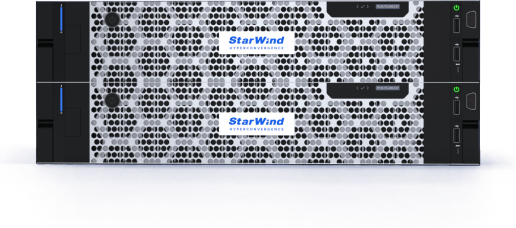As someone who understands the nuts and bolts of IT, you know data is king. Losing it? That’s a nightmare scenario. Snapshots and checkpoints offer that tempting “undo” button, great for quick fixes and experiments. But leaning on them alone for backups is playing a dangerous game. Let’s break down why these handy tools aren’t a safety net for real data protection and what you truly need to sleep soundly at night.
Why Data Protection isn’t just a buzzword
In today’s digital world, data is the lifeblood. Protecting it isn’t just good practice; it’s survival. Imagine your entire customer database vanishing – the cost in dollars and reputation would be catastrophic. A solid data protection strategy is your shield against hardware crashes, software glitches, human errors, cyberattacks, and even natural disasters. It’s about ensuring your data remains safe, accessible, and, crucially, recoverable.
Snapshots and checkpoints: Your quick recovery allies
Snapshots (common in VMware) and checkpoints (primarily in Hyper-V) are like hitting pause on your system. They capture a point-in-time image, letting you quickly revert if things go south after a change or during testing. Think of it: before a risky software install, you grab a snapshot. If the install breaks things, boom – you’re back to the clean state. They’re fantastic for those “oops” moments and controlled experiments.
The Illusion of Safety: Why snapshots fall short as backups
While incredibly useful for immediate recovery, snapshots and checkpoints have critical limitations as your only data protection strategy. The biggest catch? They don’t create independent copies of your data. Instead, they record the differences from the original. If that original disk fails, guess what? Your snapshot/checkpoint is gone too.
Think of it like this: a snapshot is a map of changes to a building. If the building burns down, the map of changes is useless.
Here’s why relying solely on them is risky:
- No True Redundancy: They live on the same storage as your live data, making them vulnerable to the same hardware failures or site-wide disasters.
- Performance Drag: Over time, numerous snapshots/checkpoints can bog down your system as it has to track and piece together more and more changes.
- Limited Recovery Granularity: Often, you can only revert the entire system, not just a single lost file. Imagine rolling back your whole server because someone accidentally deleted one document!
- Potential for Corruption: The chain of changes that makes up a snapshot/checkpoint can become corrupted, rendering your recovery point useless.
- Not Designed for Long-Term Retention: They are meant for short-term rollbacks, not the months or years of data retention often required for compliance or business continuity.
Snapshots/checkpoints: How they actually work?
When you take a snapshot/checkpoint, the system cleverly notes the current state of your data (sort of a “bookmark”). Instead of copying everything, it just starts tracking any changes you make after that point in separate “delta” files. Reverting is like telling the system to undo those changes. This makes the initial snapshot/checkpoint super fast, but as you make more changes, these delta files grow, and accessing your current data can become more complex and slower.
When to wisely use snapshots
Think of snapshots/checkpoints as your IT “undo” button for specific, short-term situations:
- Before Risky Operations: Installing updates, major software changes, or configuration tweaks.
- Testing Environments: Quickly resetting to a clean state for consistent testing.
- Development: Rolling back to a stable code version.
Crucially: Always remember they are a temporary safety net, not your primary data fortress.
Why true backups are non-negotiable
Proper backups are the cornerstone of real data protection. Here’s why they are essential:
- Independent Copies: Backups create full, standalone copies of your data, stored separately from your live environment. This protects against primary storage failures.
- Disaster Recovery: Backups can be stored offsite or in the cloud, ensuring data survival even in the event of a physical disaster at your primary location.
- Granular Recovery: You can typically restore individual files, folders, applications, or entire systems from a backup, offering much more flexibility.
- Long-Term Retention: Backup solutions are designed for long-term data storage, meeting compliance requirements and historical data needs.
- Protection Against Corruption and Ransomware: Healthy backups provide a clean copy of your data to recover from in case of logical corruption or ransomware attacks that might also affect snapshots/checkpoints.
Backups vs. Snapshots: The key differences
| Feature | Snapshots/Checkpoints | Backups |
|---|---|---|
| Purpose | Quick, short-term recovery, testing | Long-term data protection, disaster recovery |
| Data Copy | Tracks changes (delta files) | Full, independent copies |
| Storage | Typically same as original data | Separate storage (on-site/off-site/cloud) |
| Recovery | Entire VM/volume often required | Granular (files, folders, apps, full system) |
| Retention | Short-term | Long-term |
| Disaster Prep | Limited (usually local) | Strong (especially with offsite storage) |
Don’t gamble with your data: The risks of relying solely on Snapshots
Thinking snapshots/checkpoints are your backup plan is like relying on a spare tire for a cross-country road trip. Here’s what you risk:
- Total Loss from Hardware Failure: If your storage goes down, so do your snapshots/checkpoints.
- Limited Recovery Scope: Accidentally delete a crucial file? You might have to roll back your entire server, disrupting everyone.
- Vulnerability to Corruption: The chain of changes can break, leaving you with no way back.
- Ransomware Nightmares: If ransomware encrypts your primary data, it might also encrypt your easily accessible snapshots/checkpoints.
The bottom line: Snapshots are great tools, not backup replacements
Snapshots and checkpoints are incredibly useful for quick recovery and testing. They are a valuable part of a robust data protection strategy. However, they are not a substitute for true backups. To truly safeguard your valuable data against the inevitable disasters and mishaps, you need a comprehensive backup solution that creates independent, redundant copies of your data, ideally stored in a separate location. Don’t wait for a data loss scare to realize the difference. Invest in a real backup strategy – your future self will thank you.


